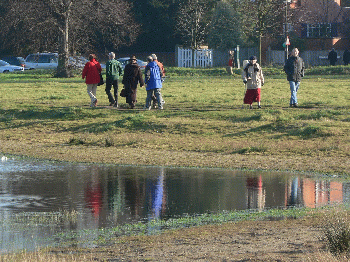| Back OpEd News | |||||||
|
Original Content at https://www.opednews.com/articles/Reflections-on-Voters-Alternative-Voting-Systems_Approval-Voting_Balanced-Approval-Voting_Balanced-Voting-221121-651.html (Note: You can view every article as one long page if you sign up as an Advocate Member, or higher). |
|||||||
November 21, 2022
Reflections on Voters
By Paul Cohen
Most considerations of voting systems focus, understandably, on voting systems. Here we take a different perspective on the topic and ask what the voting system says about voters.
::::::::
Where did the idea of ranked voting come from? Keeping in mind that the early ranked voting systems had nothing to do with simulating a series of runoff elections based on plurality voting, it seems that the idea grew
from an effort to construct a mathematical model of elections; that seemed to require a mathematical model for a voter. It probably seemed at that time that a reasonable model for a voter would be the a list of candidates ordered by the voter's preference.It is not hard to imagine that this formalism caught on and took a life of its own. Among experts in the field that became the accepted definition of "a voter". Consequently, the gold standard for collecting information from voters would be to ask them to simply put that list on their ballot. It turns out that this model of a voter is too simple; as we have noted elsewhere, this characterization of voters is defective in many important respects. Still, there was a time when this definition seemed reasonable much as this fictional history may seem reasonable now.
But whether or not there is any truth it, this story does suggest a perspective for appreciating voting systems; we can ask what assumptions about voters might justify the use of a voting system. For example, plurality voting would seem to be entirely justified if we could assume that voters are absolutely decisive. They decide on a single favorite candidate to support and subsequently are unable to countenance any other possibility. No doubt this does describe some voters, but in an election with more than two viable candidates it seems there will surely be many other voters, perhaps even a majority, who are quite open to compromise; their choice of a favorite was a close call so it is even possible that there might be a voter for whom two candidates would seem to a voter as equally satisfactory. Plurality voting provides no way for a voter even to even hint at a readiness to compromise, much less provide a guide to what alternatives would seem acceptable.
In contrast, approval voting readily accommodates such compromises; voters are free to express in considerable detail their willingness to compromise. Approval voting is an evaluative system, meaning that voters simply evaluate each candidate on suitability for office without any need to compare candidates to one another. So with approval voting, voters are in no manner motivated to consider corrupting distractions such as electability. Unlike plurality voting and unlike ranked voting, approval voting avoids demanding that voters make an arbitrary choice between candidates even in situations where the voter finds two or more who seem equally suitable for office. Approval voting simply asks the voter simply indicate any and all candidates she supports.
Unfortunately though, approval voting does fail to allow voters to express opposition to candidates; voters must choose between expressing support or indifference. As with many other voting systems, a voter can only hint at opposition indirectly, such as through some unpleasant and possibly ineffective strategic voting strategy. In contrast, balanced voting systems allow voters to explicitly express opposition just as readily as to express support.
Defenders of approval voting will contend that sure, that system does not allow a voter to explicitly oppose a candidate but a voter can support all of the other candidates and that has the same effect as a vote of opposition. While that is true, what if the voter has more to say. Perhaps he wants to support or oppose some other candidate as well but he has used up his entire ballot in opposing just a single candidate and there is no way to express anything more. What does this say about the model of an approval-system voter? The model seems to be someone who may support several candidates unless it is important to the voter to oppose some particular candidate. Any such voter, it seems, must be indifferent about all of the other candidates. Notice the extreme lack of symmetry between the opportunity to support compared to the opportunity to oppose. For how many voters would this seem a good model?
But one might well ask whether BAV suffers in some other way, making a different unreasonable assumption about voters? This is certainly possible and worth careful consideration. This topic might be addressed in the next article in this series.
Authors Bio:
Attended college thanks to the generous state support of education in 1960's America. Earned a Ph.D. in mathematics at the University of Illinois followed by post doctoral research positions at the Institute for Advanced Study in Princeton. Taught for several years at Lehigh University prior to a short stint at Bell Laboratories but followed by a much longer career at NEC punctuated by ten U.S. and international patents in the general area to semiconductor applications.
Now living in a comfortable Maine retirement community and focused on the prospect of upgrading democracy by means of an improved voting system.
